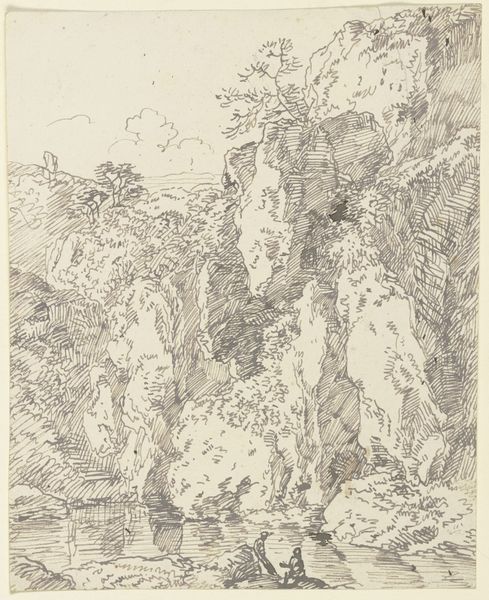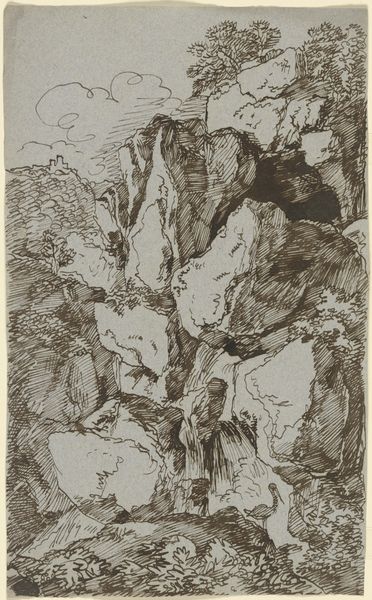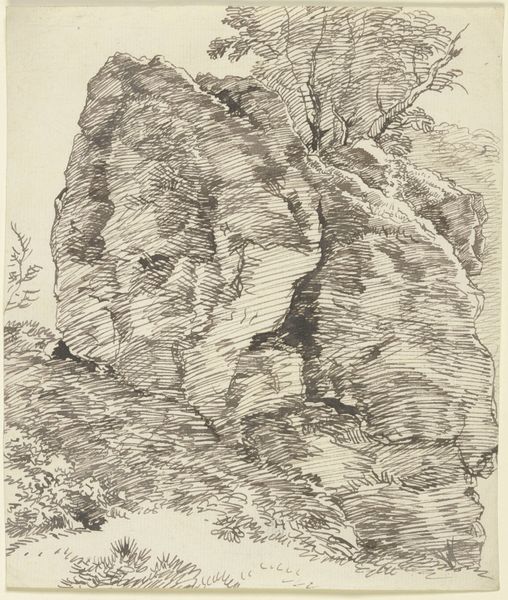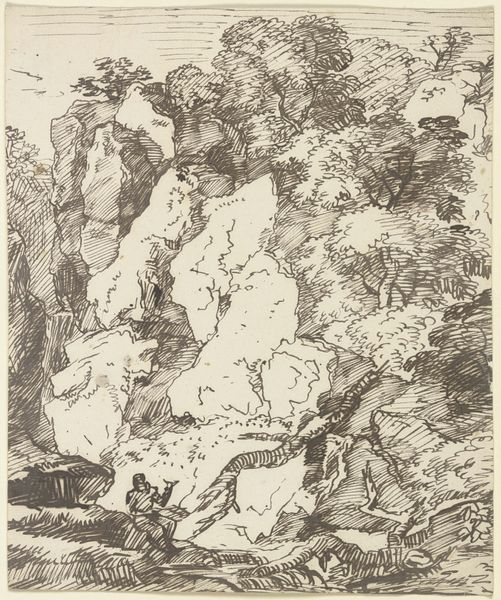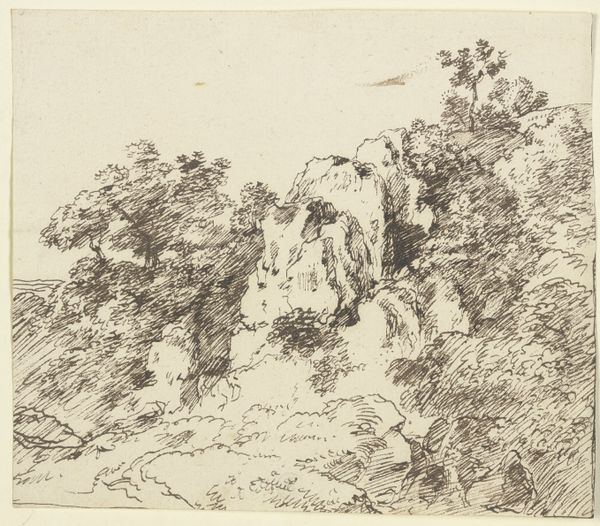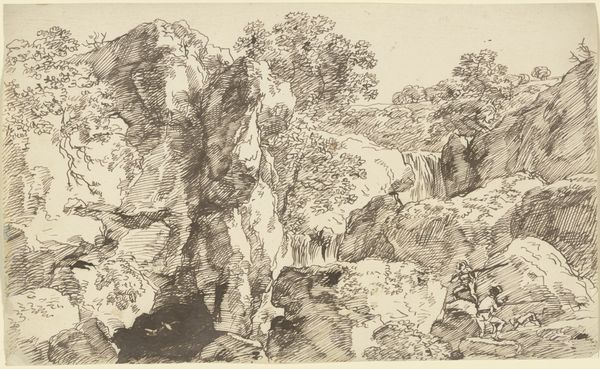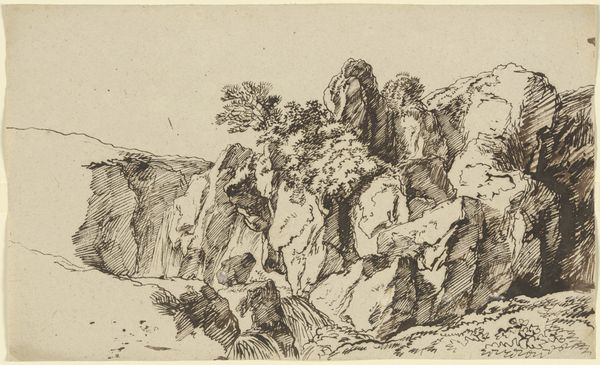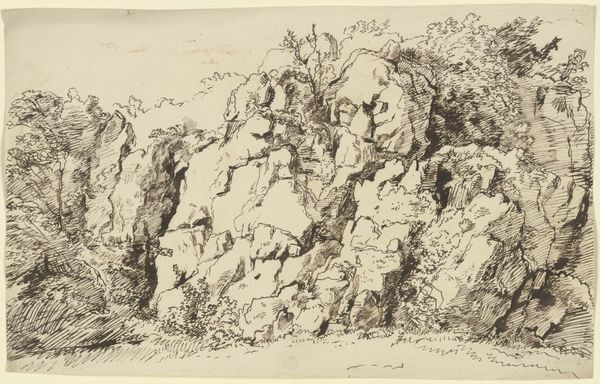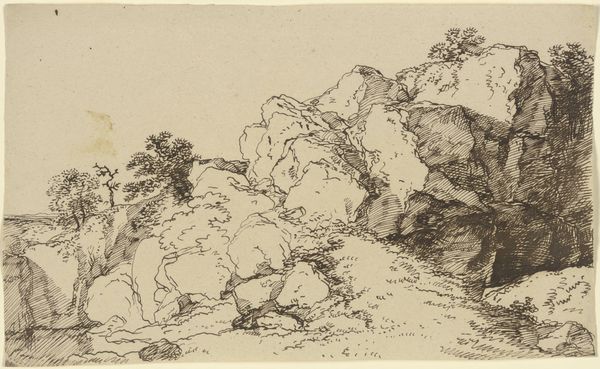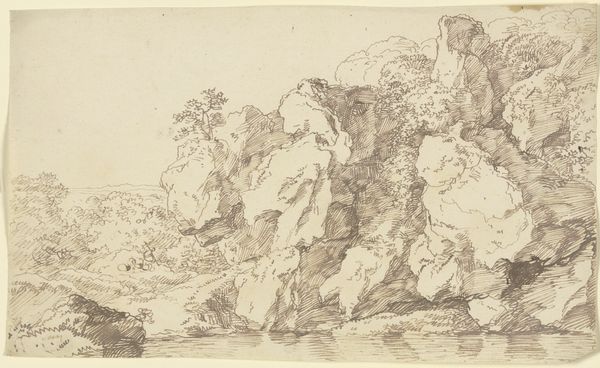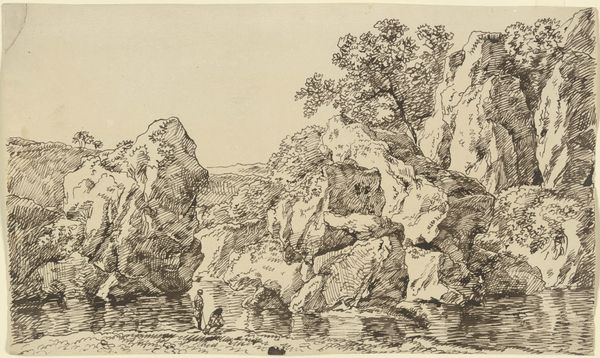
drawing, etching, ink
#
drawing
#
etching
#
landscape
#
etching
#
ink
Copyright: Public Domain
Curator: Today, we're looking at a landscape study by Franz Kobell, titled "Zerklüftete Felswand an einem Gewässer," housed right here at the Städel Museum. It's an etching, using ink on paper. Editor: It feels…unsettling, almost lonely. The severe lines describing the rock face and stark trees really emphasize the ruggedness of the scene. Curator: Absolutely. The etcher's skill here is remarkable. Notice how Kobell used line variations to create depth and texture? It's not just a pretty picture; it’s about understanding the geology. Editor: I agree. These angular strokes and dense, shadowed areas aren’t just stylistic flourishes. They create a sense of immense age. Rocks often represent endurance, the power of the earth. Is this about human fragility contrasted against that power? Curator: Possibly! He definitely aimed to convey the overwhelming presence of nature. Considering the labor-intensive nature of etching, transferring that raw emotion from observation to finished print would have been physically demanding. Each line etched, each area shaded... a testimony to the process. Editor: The stark contrasts are striking too; light and shadow wrestling across the composition, which evokes internal tension as well. Water typically represents reflection, the unconscious... What secrets do these rock faces conceal? Curator: Well, from a material perspective, consider the availability of ink and quality of paper at the time. The specific ink composition and paper origin undoubtedly shaped the final product as well. We forget about trade networks informing creative practices. Editor: True. But back to the image: even without people, this feels intensely human, imbued with symbolic significance. The rock almost looks like a face. Curator: I see that now too. A stern, aged face etched in stone! Editor: Kobell truly makes us consider the layers, both material and symbolic, that build the experience. Curator: Indeed. It highlights not only a geological exploration through artistic techniques, but invites a deeper emotional analysis. Editor: And that careful rendering, stone by stone, tree by tree, asks us to consider our connection with timeless things.
Comments
No comments
Be the first to comment and join the conversation on the ultimate creative platform.

